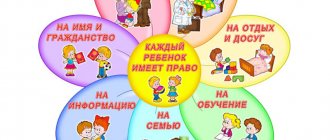From September 1, all primary schoolchildren in Russia should receive free hot meals, regardless of family income. And it should be useful. What do parents need to know in order to feed their children just as healthy at home?
Students of municipal and state schools from grades 1 to 4 will receive free hot meals. The school will need to take into account the child’s health characteristics. This means that children with chronic illnesses or obesity will receive special nutrition.
What should a balanced diet for a primary school student generally look like? Doctor of Medical Sciences, Professor, Head of the National Research Oleg Medvedev talks about this clearly and clearly . He broke his message to parents into five points. They are important for children's nutrition both at school and at home.
Point 1. The basis of a schoolchild’s diet should be plant foods.
First of all, these should be fruits and vegetables, as well as products and dishes made from wholemeal flour. Let us give examples of such nutrition. A vegetable side dish with a slice of whole grain bread plus an apple or banana for dessert will meet the child’s body’s need for carbohydrates (they should be from 170 to 420 grams per day). And porridge for breakfast will give you energy for the school day.
Two extremely important points: alternate vegetables and fruits so that the child receives maximum variety, and try to include vegetables in every meal, this is like an inoculation against excess weight and fast food.
It is known that children often do not like vegetables and refuse them. This habit must be overcome for the sake of the child’s health. Involve him in the cooking process, try to interest him in a variety of colorful vegetables and fruits. This often works and allows you to introduce essential nutrients and vitamins into your diet.
Feed correctly! How to avoid obesity in children Read more
Consultation for parents “Proper nutrition for preschoolers”
“Consultation for parents “Proper nutrition for preschoolers””
What do we eat
?
What is food? This is most often what we like in terms of taste, what we and our children are accustomed to. But it is important to turn to rational, healthy nutrition
.
It is our example that will form the basis of a child's future nutritional
.
And we will form his first taste norms, preferences and habits, on which his future health will depend. It is important to properly organize children’s nutrition and follow the rules of proper nutrition
:
7 great and obligatory not:
1. Don't force. Let us understand and remember: food violence is one of the most terrible violence against the body and personality, causing both physical and mental harm. If a child doesn’t want to eat, it means he doesn’t need to eat at the moment! If you don’t want to eat only something specific, then you don’t need exactly that! No pressure to eat! No fattening
! A child is not a farm animal! Lack of appetite during illness is a sign that the body needs internal cleansing, it wants to go hungry, and in this case, the voice of instinct is more correct than any medical prescription.
2. Don't impose. Mild violence: persuasion, persuasion, persistent repetition, suggestions to stop.
3. Don't please. Food is not a means of achieving obedience and not a means of pleasure. Food is a means of living. Healthy enjoyment of food is, of course, necessary, but it should only come from a healthy appetite. With your sweets you will only achieve spoilage and perversion of taste, as well as metabolic disorders.
4. Don't rush. Food is not firefighting. The pace of food is a purely personal matter. Rushing to eat is always harmful, and even a cow needs breaks from chewing. If you have to rush to school or somewhere else, then it is better for the child not to finish eating than to swallow another half-chewed piece in confusion and panic.
5. Don't be distracted. While the child is eating, the TV should be turned off and the new toy hidden. However, if the child is distracted from eating on his own, do not protest or push: it means he is not hungry.
6. Don't indulge, but understand. You should not allow your child to eat anything and in any quantity (for example, unlimited doses of jam or ice cream)
.
There should be no food compulsions, but there should be food prohibitions, especially with diathesis and allergies. Following all the other “don’ts”
will save you from a lot of additional problems.
7. Do not worry or disturb. No anxiety, no worry about whether the child ate on time and how much. Just watch the quality of the food. Don’t pester, don’t ask: “Have you eaten? Do you want to eat?"
Let him ask, let him demand it himself, when he wants, it will be
right - so
, only so! If the child is older, then you can tell him that breakfast, lunch or dinner is ready and offer him something to eat. The food is in front of you: eat if you want.
To comply with these rules you must remember
that
nutrition
for a child is a source of energy, and
a correct
, high-quality attitude towards
nutrition
is the most important factor in the growth and harmonious development of a child, adaptation to constantly changing environmental conditions, and increased immunity.
Insufficient or excess nutrition
leads to the occurrence of dystrophic conditions (hypo, paratrophy, obesity, anemia, acute digestive disorders, predisposes to infectious and other diseases.
Any nutritional defects in preschool
age can remind of themselves in older age periods.
To ensure proper nutrition
the following conditions are required:
a) the presence of all necessary ingredients in food (proteins, fats, carbohydrates, microelements, vitamins)
;
b) a healthy digestive tract, as well as the presence in it of all enzymes for proper
processing of these nutrients;
c) rational diet
: This is a modern technology of cooking (traditional kindergarten cuisine is fully consistent with the physiological characteristics of the child) and rational distribution of food by calorie content throughout the day.
Preschool children
age is characterized by high physical activity, accompanied by large expenditures of energy, increased metabolism, improvement of individual and intellectual abilities, development of the emotional and psychological sphere.
The basic principle of nutrition for preschoolers
should serve as much variety as possible in their diets. And only by including all the main food groups in daily diets - meat, fish, milk and dairy products, eggs, edible fats, vegetables and fruits, sugar and confectionery, bread, cereals, etc. - can children be provided with all the nutrients they need. Exclusion of these products from a child’s diet or excessive consumption of any of them leads to problems in the health of children.
For rational nutrition of preschoolers, it is necessary to choose the right products
, but this is not the main condition.
The cooks should strive to ensure that the finished dishes are not just tasty, but the junior teacher
should arrange them so that they look beautiful, tasty, and aromatic.
Diet _
, must include at least 4 meals: breakfast, lunch, afternoon snack, dinner, and three of them must include a hot dish.
The duration of the intervals between meals should not exceed 3.5-4 hours, but we should not forget that frequent meals reduce appetite and thereby impair the absorption of nutrients. The organization of nutrition
in a preschool educational institution provides for providing children with most of the energy and nutrients they need.
The first meal - breakfast, should be approximately 25% of the daily diet, in total volume it is about 300 g, including drinks, and the child receives it 30 minutes after a night's sleep.
The breakfast diet should include milk porridge, cheese and butter.
Between breakfast and lunch (the child should receive fresh juices or fruits.
Lunch makes up 35% of the daily diet, which includes: soups, salads, side dishes, fish and meat products, grain bread, dried fruit compote.
You should pay attention to ensure that the child does not overeat and does not compensate for the amount of food at the expense of one dish. The portion of the first course should be small, the soup should be hot, and the portion of compote should not be more than 150 ml.
Afternoon snack: kefir, yogurt, cottage cheese casserole, milk soups.
Sweet waffles, cookies, candies - these products do not provide any nutritional value other than calories.
Dinner is advisable no later than 1.5 hours before bedtime: mashed potatoes or buckwheat porridge, a few slices of hard cheese or a hard-boiled egg, sweet tea.
Harmonious growth, physical and neuropsychic development, resistance to infections and other adverse environmental factors are impossible without healthy nutrition.
.
In addition, properly organized nutrition
develops cultural and hygienic skills in children, healthy habits, so-called rational eating behavior, and lays the foundations for a
nutritional
.
Therefore, when organizing meals for preschool children
age, it is necessary to take into account that the products are high in calories, and their diet contains the required amount
of nutrients
: proteins, fats, carbohydrates.
The role of nutrition
in modern conditions, it increases significantly due to the deterioration of children's health as a result of a whole range of reasons, one of which is a violation of the
nutritional
and a decrease in its quality, both in the family and in children's groups.
This requires clear continuity between them. We must strive to ensure that nutrition
outside the preschool educational institution supplemented the diet received in kindergarten.
To this end, information stands introduce parents to the daily menu
.
It follows from this that for the health of the child it is necessary to organize proper nutrition and use 5 rules of proper food
:
Rule 1
. Food should be simple, tasty and healthy.
Rule 2
. children. The mood while eating should be good.
Rule 3
.
A child has the right
to his own habits and tastes.
Rule 4
.
The child has the right
to know about his health.
Rule 5
. There are no bad products, only bad cooks.
We must strive to ensure that nutrition
outside the preschool educational institution supplemented the diet received in kindergarten.
Memo for parents
What does a child learn through play?
- Emotionally get used to the complex social world of adults.
- Experience other people's life situations as if they were your own.
- Make a discovery for yourself: the desires and aspirations of other people do not always coincide with mine.
- Respect and believe in yourself.
- Rely on your own strength when faced with problems.
- Freely express your feelings.
- Experience your anger, envy, anxiety and worry.
- Make a choice.
Rules of the game for children and parents
The game will teach us:
- speak to the child in his language;
- overcome the feeling of superiority over the child, your authoritarian position;
- discover a way of learning through imitation of models;
- love children as they are;
- revive childish traits in yourself: spontaneity, sincerity, freshness of emotions.
While playing, we can teach children:
- look at yourself from the outside;
- anticipate the strategy of role behavior;
- make your actions and feelings understandable to the players;
- to trust each other;
- strive for justice, overcome the desire not only to dominate, but also to agree and submit in the game.
Consultation for parents “Brush your teeth clean and clean”
You need to take care of your baby's teeth from birth. You will need a brush, paste and... a little patience.
Every month of a child's life brings parents
not only the joy that the baby is developing correctly, but also sets new challenges for them.
The appearance of a baby’s first teeth makes you think: “How to care for baby teeth? When should a child start cleaning
?
How to choose the “right”
toothbrush for a baby?
It is important to understand that you need to take care of your baby’s teeth from the moment they appear. To monitor your baby's oral hygiene, you will first need a special toothpaste and brush.
Wealth of choice
What types of toothbrushes are there for babies?
What should you pay attention to when choosing?
Dentists emphasize that the most important thing in a toothbrush is the bristles. It can be natural or synthetic. Natural bristles are used extremely rarely today, since, by modern standards, they are not hygienic enough. Organic hairs harbor many dangerous microorganisms, and the bristles themselves split too quickly. Such a brush injures the child’s tender gums and is more likely to harm than benefit. Toothbrush with a synthetic “head”
more preferable.
It is better to look for one in which the artificial threads are given a rounded shape. In dentistry it is considered optimal. This model will not injure the baby’s gums. It should be taken into account that synthetic bristles come in different hardnesses. For temporary (baby)
teeth and the oral cavity of children under 6 years old, only a soft brush is recommended.
Reading the label
Pharmacies and stores offer a variety of toothbrushes designed for different children's ages:
• for children under 2 years old;
• for children 3 – 6 years old;
• for schoolchildren;
• for teenagers.
For the little ones, silicone finger brushes are produced, with the help of which parents
They will be able to remove plaque from a child’s first year of life or massage his gums.
Toothbrush models are varied, but their main difference is the “working”
parts. Its length should not exceed the width of 2 – 3 teeth.
The shape of a toothbrush can be quite bizarre. Pay attention to models that have
tufts of bristles of varying heights are located in the area.
According to experts, they clean teeth more effectively
.
If a toothbrush is intended for a one-year-old baby, then its handle should also be comfortable for an adult - after all, not every child can cope with a difficult hygiene procedure on their own.
For an older toddler, we recommend choosing a brush with a handle, in the design
which takes into account the structural features of a child’s hand.
We do not recommend that you purchase a brush whose handle is shaped like a car or a funny animal. Of course, such models are attractive to children, but they are almost always structurally inconvenient
.
Don’t forget to replace this important personal hygiene item every 3 to 4 months.
Before using your toothbrush for the first time, be sure to pour boiling water over it. There are brushes on sale with a “suitability indicator”
— as their bristles wear out, they change color. The toothbrush should be stored in an upright position, and the case should be used only for transporting it.
Point 3. Fats are not only a source of energy, but also a building material for the brain.
Many people do not know that the brain, spinal cord, and nervous system consist mainly of fats. That's why we need them. But it is important to choose the right fats and in the right doses. A junior schoolchild should eat at least 40 grams of them per day. And it is better to choose unsaturated fats: unsaturated fatty acids for them are not synthesized by the human body. Therefore, you can only get them through food.
Article on the topic
Leave without sweets. How to teach your child to eat healthy food
The main source of such polyunsaturated fats is sea fish, which is also rich in phosphorus and protein. To provide a growing child with essential omega-3 fatty acids in the required amount per week, it is enough to eat two servings of fish.
Unfortunately, many children do not like fish. But there are other ways to provide them with omega-3 acids. They are present in vegetable oils (especially flaxseed), flax seeds, avocados, nuts and seeds. The second way to provide your child with healthy fats is to replace the butter in the sandwich with a vegetable spread. The effectiveness of such a replacement was studied in Finland, when the famous “North Karelia” healthy eating project was carried out there. In this region of the country, the entire population was switched to proper nutrition, and soon life expectancy here increased by 13 years: from 68 to 81 years.
An interesting point: most standards for children and adults for macro- and micronutrients differ, but for saturated fats, the WHO recommendations are the same. In children and adults, they should provide 10% of calories from the total diet. The daily caloric intake for a child is significantly less than for an adult, that is, the amount of saturated fat for schoolchildren should also be significantly less. Parents need to know that saturated fats are found in fatty meats, butter and fast food. This means that these foods must be limited in the child’s diet.
School snack. 7 healthy lunch options Read more
Consultation for parents “Healthy eating - healthy child” consultation (junior group)
Consultation for parents
"Healthy eating - healthy child"
It is a well-known fact that for food to be beneficial, it must be balanced, healthy and eaten with pleasure! When it comes to children, healthy food is an especially pressing issue.
All parents know about the benefits and harms of foods and allergic reactions, but not every mother really responsibly chooses foods for her child. Our state has a very strict approach to nutrition in children's institutions. Appropriate standards have been established for it. Coming to kindergarten, every parent can see the menu and nutritional standards, and it is better to ask the children about taste. Of course, not all dishes are to my liking. About porridge, jelly (and who knows what else), a child may say “ugh”. This is understandable; it is impossible to satisfy all the preferences of children. A lot depends on how the child in the family eats.
Do they feed him with a spoon or pamper him with his favorite chocolates instead of a full meal? You see less and less a mother who bought kefir, fermented baked milk for her child - why, when there is yogurt, fruit, etc. And especially mothers who would make compote from dried fruits - why, when there are juices, forfeits and Coca-Cola. And when a child comes to kindergarten, problems begin - I don’t drink this kind of compote, I don’t eat this kind of fish, I don’t like cutlets. And I'll have the sausage! And kindergartens, in turn, want to provide the child with nutritious nutrition - natural, healthy. Therefore, children’s diet includes cottage cheese, fish, meat, cabbage, liver, and just kefir with fermented baked milk. When serving food to children, we try to tell them about the benefits of this product. Most often, children, looking at each other, happily eat soup, casseroles and omelettes.
Remember your childhood - such soufflés and casseroles are not always prepared at home. The child must receive a sufficient amount of nutrients that will meet his needs for energy and basic components (proteins, fats, carbohydrates, minerals, trace elements, vitamins). Food should be varied, balanced and contain the required ratio of nutritional components. Nutrition should proactively accompany all processes of growth and development of the child’s body, in other words, while growing up, the child should not experience a lack of food and nutrients.
The kindergarten menu, according to established standards, has a carefully calculated energy value. For example, the daily norm for a child under three years old is 1540 kcal, and over three years old – 1900 kcal. It is on the basis of these numbers that the menu in kindergarten is selected. First of all, in kindergarten, your baby will receive breakfast - sometimes it is milk porridge, a sandwich with butter and cheese, tea or cocoa.
A little later, according to the schedule, a second breakfast follows, for which they usually give either fruit juice, or a fruit or fermented milk product. Lunch is the most important meal, which consists of a full first meal, a second meal with a side dish, a vegetable salad, and, of course, juice or compote as a third. After sleep, children usually have an afternoon snack - most often they serve cottage cheese dishes, delicious buns or pies, and tea for afternoon tea in the garden. In every preschool institution, children are fed fully and efficiently. It is important to note one of the rules according to which children cannot be fed the same dish more than once every twenty days.
That is why the diet of children in kindergarten is quite varied. The organization of meals in kindergarten must be combined with proper nutrition of the child in the family. We need to strive. So that homemade food complements the kindergarten diet. For this purpose, parents should familiarize themselves with the menu posted daily in groups. Therefore, for dinner it is better to offer those products and dishes that the child did not receive in kindergarten, and on weekends and holidays it is better to bring his diet closer to the kindergarten diet.
Remember! Children are very attentive, they see and hear everything. Watch your food cues. We can only say good things about food. While eating, everything should be focused on this process; for a child this is quite a difficult matter.
Child nutrition is the most pressing topic for parents. Eating little is a disaster. Eating a lot is also a problem. Refuses soup, likes only potatoes or candy, eats only with mom (dad, grandma)... Many people ask the question: “is my child eating right?” Balancing a child's diet is a concern for most parents. Let's talk about products that can give a growing body everything it needs. So…
Porridge
It turns out that oatmeal is considered the most preferable food for babies. Of course, the absolute champion in nutritional properties is buckwheat porridge. In addition to the high content of vegetable protein, they are also characterized by a significant content of salts: phosphorus, magnesium and potassium, as well as iron. Oatmeal takes an honorable second place in terms of nutritional value. It is also high in protein, B vitamins, potassium, phosphorus, magnesium and iron. In addition, oatmeal contains the maximum amount of vegetable fats.
Oatmeal is fiber, it stimulates intestinal motility and easily saturates the body with carbohydrates. This is a great breakfast, high in B vitamins, iron, zinc and calcium. If your baby refuses to eat oatmeal in its pure form, add fruit, nuts or a little jam or honey.
Eggs
This is a very valuable product in any form: hard-boiled, scrambled eggs or used to prepare various dishes and drinks. They contain as much as 6 grams of protein, vitamins B12 and B2, vitamin E, folic acid, zinc and iron. It is advisable for the child to eat one egg per day.
Oil
Just 3-5 g of butter and vegetable oil per day is enough to provide the child’s body with vitamins A, D, E, mono- and polyunsaturated fatty acids. It turns out that moderate consumption of butter is not only not harmful, but also healthy! Butter contains vitamins A, B, C, D, K and E. These vitamins have a positive effect on vision, skin condition, and bone growth. The oil also contains useful substances such as carbohydrates, proteins, fats and fatty acids, manganese, magnesium, calcium, iron, copper and sodium, phosphorus and zinc. The cholesterol contained in oil turns out to be beneficial too! Especially for children! Cholesterol is involved in the formation of sex hormones and helps with brain function. And a lack of cholesterol leads to worsening mood and depression.
Dairy
Milk is a controversial product. But it must be in the child’s diet. Choosing the right manufacturer for you is not easy, but it is necessary. To do this, read the results of independent examinations, try the selected product on your child, and if you do not notice an allergy or eating disorder, feel free to include milk from the selected manufacturer in your diet. Experts highly recommend including homemade yoghurts and kefir in the children's menu. They contain a lot of calcium and are easier to digest than regular milk. In addition, the bacteria they contain are very useful for promoting intestinal health.
All dairy products are rich in fat, easily digestible calcium and phosphorus salts. Children aged three to four years should receive at least 0.5 liters of milk daily, including kefir, acidophilus milk and yogurt.
Whole grains
No, we do not suggest you sprout wheat and feed it to your baby. But brown rice and whole grain bread are the best foods for a child. They are much better than white bread and regular rice; they provide the fiber, minerals and vitamins the body needs, but do not burden the digestive system. In any case, it is not recommended to introduce a child to white bread.
Fish
Fish serves as a source of protein, polyunsaturated fats important for metabolism, vitamins A, D, B2, B12, PP, as well as calcium, magnesium, phosphorus and zinc. For children, you need to choose low-fat fish - cod, pike perch, hake, sea bass.
Liver
Liver is rich in vitamin A, which is beneficial for the immune system, eyes, skin, and mucous membranes. Beef liver contains the most vitamin A. Chicken liver is high in folic acid and also contains a lot of vitamin B12. The liver contains potassium, sodium, calcium, magnesium, copper. It is very useful for children suffering from anemia. However, you need to remember that an excess of vitamin A is undesirable, so you should not often give liver to your child.
Meat
Protein is especially important during the growth period. The choice of protein-rich foods is huge: legumes (in combination with grains), soy products (tofu), meat, fish, poultry. But from no food product will a child receive such an amount of animal protein, the required set of amino acids and iron, as from meat. Even if you are a convinced vegetarian, pediatricians recommend not switching your child to this diet until he is able to make this decision himself and consciously.
Vegetables
Vegetables contain a lot of water, various minerals, water-soluble vitamins and contain almost no protein or fat. With them, most of the vitamins C, group B1, carotene, and mineral salts (calcium, sodium, potassium, magnesium, iron, etc.) necessary for the body are delivered to the body, which are necessary for the normal course of life processes and growth of the body. Preference should be given to fresh vegetables, but you can also use freshly frozen or steamed vegetables. Vitamins are better preserved in such vegetables
Broccoli
A wonderful vegetable that children love to call “trees”, available, thanks to freezing, both in winter and summer. Broccoli is very useful for children of any age, especially during the period of active growth, because this cabbage contains a lot of calcium and other nutrients: potassium, beta-carotene and B vitamins. In general, many nutritionists call cabbage an “ideal product”, because in its raw form it helps remove toxins from the stomach and small intestines, improves digestion, improves immunity, and helps destroy viruses and bacteria. So feel free to introduce cauliflower, Brussels sprouts, and regular white cabbage into your child’s menu.
Potato
Although nutritionists are up in arms about this root vegetable, they still recommend including it in children's menus. After all, one serving of potatoes contains a lot of beta-carotene and calcium; to get the same amount of calcium, a child would have to eat 23 servings of broccoli. In addition, potatoes contain a lot of fiber that is beneficial for children.
Beet
The advantage of beets is that they retain their beneficial properties all year round. Boiled, baked and raw beets contain vitamins (C, B1, B2, PP), microelements (iron, potassium), and pectins. In addition, it is useful for the functioning of the cardiovascular system and the digestive tract, and it tastes good, so even the capricious sweet tooth will agree to eat it.
Fruits
Just like vegetables, fruits contain a huge amount of vitamins, fiber and microelements. If possible, fruits should be given to children fresh and in a wide variety, since they all contain different amounts of different vitamins and microelements. Apples, pears, plums, apricots, currants, strawberries, raspberries, blueberries and others are just a treasure for your baby, of course, provided that the child is not allergic to a particular product.
Nuts
The benefit of nuts lies in the unique balance of vitamins B, A, E, P, etc. and minerals (potassium, sodium, phosphorus, magnesium, iron, etc.). Unlike animal fats, which are rich in bad cholesterol, nut fats contain virtually no cholesterol. But they contain fatty acids that the child’s body is not able to produce on its own. It is these substances that are necessary for high-quality fat metabolism, which will save the baby from the problems of excess weight. The healthiest foods for children are walnuts, hazelnuts and pine nuts.
Water and juices
Children should not be limited in their drinking. Water loss especially increases during the hot season and during physical activity. Therefore, the water balance in the body must be replenished by drinking free liquid - water, juice, tea, etc. Water should be purified or boiled, and juices should be natural. Liquid intake should be limited during meals.
When to feed?
What time of day is best to offer a preschool child breakfast, lunch or dinner?
At first glance, this does not matter much (after all, we, adults, eat when we are hungry), but this position is not entirely correct. A fixed diet is needed to develop a conditioned reflex in the child to eat at a specific time of the day, which is necessary for better production of digestive juices and complete absorption of food.
Therefore, at the age of 3-7 years, it is important for a child to ensure relatively strict adherence to the diet. At the same time, it is advisable to eat at least four times a day. It is better to distribute the daily amount of food so that approximately 25% are for breakfast and dinner, 35-40% for lunch, and 10-15% for an afternoon snack.
It is best to give breakfast to preschoolers at approximately 8-9 o’clock in the morning, then the remaining meals will be distributed as follows: lunch at 12-13 o’clock, afternoon snack at 16-17 o’clock, and dinner at 19-20 o’clock.
When food is given to children at other times, it is still necessary to ensure that at least the correct time intervals are observed (intervals of approximately 3-4 hours, which will ensure complete digestion of food in the stomach). This does not mean that children should not receive absolutely anything edible in between. They can easily drink water and not too sweet tea, neutral and/or slightly acidified juices, as well as fruits or berries. Sweets and flour are undesirable here. Remember that a child’s disordered eating is often accompanied by appetite and digestive disorders.
Be healthy!
Point 4. Lean meat - yes, meat products - no.
Even if the labels of sausages, frankfurters and other similar meat products say that they are intended specifically for children, there is much more harmful than beneficial in them. As a rule, such products contain excess salt, dyes, various food additives and thickeners. All this makes such meat products useless at best. It is permissible to treat yourself once a week to a delicious ham from a trusted manufacturer, or even better - made with your own hands. But it’s often not worth eating.
Turkey, chicken, fish and lean beef will provide the body with enough protein and B vitamins.
Article on the topic
Schoolchildren's meals. What to feed an excellent student
Point 5. The less sugar, the better.
The main problem with products for children is the excess sugar in them. Even glazed cheese curds or breakfast cereals, which are presented as healthy food, contain up to 13 grams of sugar per 100 grams of product.
They say that sugar is “empty calories.” This is true. It has no fiber, no vitamins, no minerals, it is absolutely devoid of anything useful. Research has proven that excess sugar is one of the causes of the global obesity epidemic. And first of all - childhood obesity. This epidemic has also affected our country. According to statistics, in Russia 13% of girls and 26% of boys are overweight and obese. Plus, sugar increases the risk of developing cancer and cardiovascular diseases.
It is clear that manufacturers add sugar to children's products to increase sales. The child likes the sweet taste, and if the packaging also depicts a favorite cartoon character, then sales are guaranteed. This is how bad eating habits are formed from a very early age: regular food seems too bland and unappetizing, the child is ready to eat only sweets. All sweet drinks are especially harmful. Sugar dissolved in water quickly and directly enters the blood. This contributes to the development of obesity and negatively affects metabolism.
Remember, food is also very important for school performance. A child who eats properly is less tired in class, has better memory and the ability to concentrate, and therefore performs better academically.





